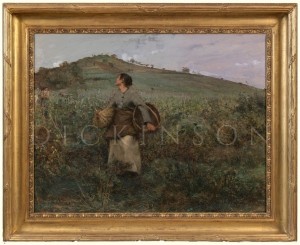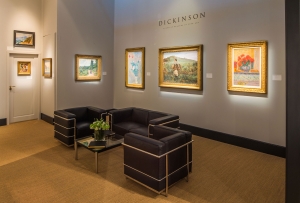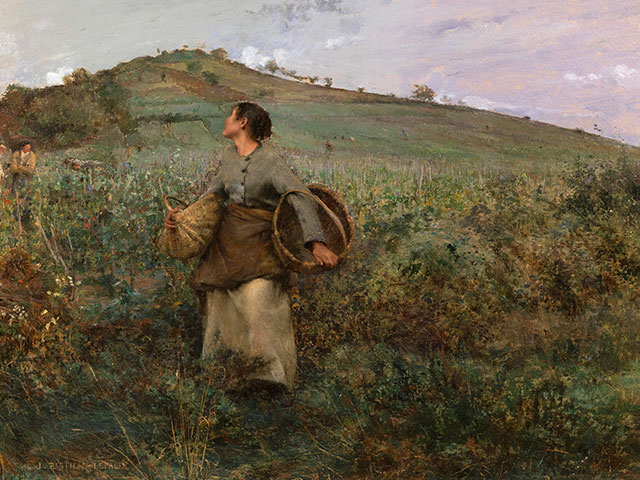Dickinson is pleased to have facilitated the Van Gogh Museum’s acquisition of Jules Bastien-Lepage’s Naturalist landscape Au Temps des Vendanges’ (At Harvest Time) at this year’s TEFAF Maastricht.



“I wish to represent country life in all its phases”
– Jules Bastien-Lepage
Executed in 1880, shortly before the artist’s death in 1884, Au Temps des Vendanges typifies Bastien-Lepage’s interpretation of Naturalism, combining photographic precision with a tremendous psychological intensity. As Bastien-Lepage explained, ‘I wish to represent genuine country life in all its phases’. Borrowing from the techniques of the English Pre-Raphaelites, whose work he admired, Bastien-Lepage balances the finer details of the individual flowers and grasses with a more broadly painted distance. Dominating the centre of the composition is a young woman with two empty paniers under her arms who walks towards the viewer but does not directly engage, turning instead over her shoulder to speak to her companions in the distance.
With his sympathetic but unidealised representation of the lives of ordinary country people, Bastien-Lepage distanced himself from the more wistful style of the Barbizon school painters, encouraging contemplation of the social issues dominating public consciousness. His honest, animated images of French peasants made him a natural model for Van Gogh, and Au Temps des Vendanges will fill an important gap in the Van Gogh museum’s holdings: as far as we know, this is the only painting by Bastien-Lepage in a Dutch public collection apart from a small study at the Mesdag Collection in The Hague. Axel Ruger, Director of the Van Gogh Museum, announced: “We are delighted with this purchase: not only is The Grape Harvest an impressive masterpiece, it also illustrates the way Van Gogh was inspired by his predecessors.”
Au Temps des Vendanges will go on display at the Van Gogh Museum on June 14th.


Au Temps de Vendages as displayed by Dickinson at TEFAF Maastricht, 2016



